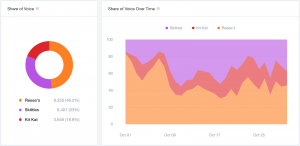— August 7, 2017

LoboStudioHamburg / Pixabay
“Succeeding in business is all about making connections.” — Richard Branson
When you bake a chocolate cake, missing one ingredient can lead to disaster. Without baking powder, it goes flat. Without the sugar, it’s bitter. The same applies to the outreach tactics for account-based marketing. When you mix them together, they all work harder. I’ve previously written about two ingredients for successful account-based marketing — phone calls and personal emails. Today, let’s dig into the third — social media. How do you leverage social platforms the right way?
You have to approach social media outreach carefully because, contrary to some beliefs, it is not advertising. It’s more like an ongoing business networking event that you can attend at your convenience.
It’s helpful to think about business functions where you meet in person. Have you ever been to one where someone has approached you to sell you their product or service? How did you react? If you’re like most people, you probably excused yourself to make an emergency trip to the hors d’oeuvres table, ending the conversation as quickly as possible.
The person who uses social media only to promote their brand, is doing the same thing as the individual you attempt to avoid in a physical environment. Online or offline it doesn’t work. No one goes to networking events, Twitter or LinkedIn to make a purchase. They’re there to learn, connect and form relationships.
Getting the Most out of LinkedIn
So don’t jump on LinkedIn and send out a string of promotional InMails or post multiple notifications about your company’s products. Instead, develop a giving attitude and do something for the prospects you’re pursuing. Like, share and comment on their posts. Also, LinkedIn’s research shows that people want to be able to access educational information from subject matter experts. Thus, post your content, but make sure it’s relevant and helpful to your target audience. Good content opens doors for your key accounts’ associates to engage with your sales people.
If you invest in LinkedIn’s Sales Navigator, there’s even more you can do. This solution is designed to make it easier to focus on the accounts and people who matter most. Its Lead Builder function enables you to create and save lists of people based on your criteria. You can use it to find the people and accounts you want to target. Just choose the industry, company size, geography and any other parameter that’s important to you. For instance, if you’re interested in reaching out to marketers at technology companies in the U.S. with 500 or more employees, you can create a search with these attributes. You can even add the seniority level of the people who you want to target.
Then, run through the list and see who you want to save as a “lead.” Once you’ve done this, you’ll see their updates on your Sales Navigator home page even if you are not connected to them. Also, these updates won’t be mixed in with those of connections who you’re not pursuing for business purposes. In addition, you can have emails sent to you at regular intervals to let you know about your leads’ activities on LinkedIn. With this information at their fingertips, salespeople can engage with prospects in a relevant way.
To make engagement easier with those who are not your first-degree connections, you can use a limited number of InMails to reach out to them. Make InMails personal and don’t be too promotional as shown in this example:
Dear Zach:
I just shared your post “How to Succeed with Marketing Automation” with several of my associates. I enjoyed your insights.
Since you clearly understand the value of creating and systemizing a process, I thought you’d appreciate our solution for keeping content marketing programs on schedule.
Can you let me know when you have 15 minutes next week to chat about this?
Have a great day.
Tara
Turning on the Power of Twitter
While LinkedIn plays a starring role in account-based marketing, Twitter plays a supporting role. For instance, you may find it easier to get people to follow you on Twitter than it is to connect with them on LinkedIn. Once they follow you, you can direct message them, start to build a relationship, suggest connecting on LinkedIn and move the conversation over there. Of course, stay top of mind by retweeting and liking their tweets.
In the end, account-based marketing comes down to one-to-one personal communications. You have to use multiple methods to develop relationships with targeted prospects — phone, email and social media. LinkedIn gives you everything you need to find, follow and contact the right people, but don’t forget Twitter. It can also be the stepping stone to a robust and profitable connection.
Digital & Social Articles on Business 2 Community
(38)
Report Post






